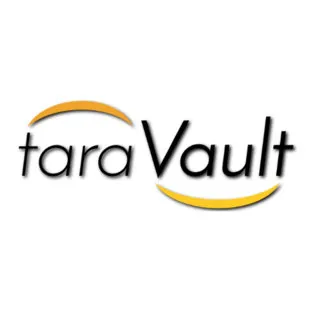
TaraVault, the retired now source code management platform
Note: Inflectra has announced the retirement of TaraVault, the source code management platform, by early April 2025.
Table of Contents
- Introduction
- Key Features at a Glance
- The TaraVault Philosophy: Who Is It For?
- GitHub vs. TaraVault: A Quick Comparison
- Pros and Cons
- Technical Architecture and Scalability
- Use Cases and Industry Applications
- Integration with Other Tools
- Spira Suite: A Complementary ALM Platform
- Getting Started with TaraVault
- Frequently Asked Questions (FAQ)
- Conclusion
Introduction
When exploring the landscape of Git hosting, you’ll find platforms built for different philosophies. While some focus on open-source communities and others on all-in-one DevOps, TaraVault, by Inflectra, carved out a specific niche: enterprise-grade source code management tightly integrated with Inflectra’s Spira suite for application lifecycle management (ALM).
TaraVault was designed to provide secure Git and Subversion hosting for organizations using SpiraTest, SpiraTeam, or SpiraPlan. However, with its announced retirement by April 2025, it’s critical to understand its role and how it differs from the broader Spira suite, which continues to thrive as a comprehensive ALM solution. This article provides a detailed look at TaraVault’s features, its integration with Spira, and how the Spira suite complements or contrasts with TaraVault’s capabilities.
Key Features at a Glance
TaraVault’s feature set was tailored for enterprise teams needing seamless integration with Inflectra’s ALM tools.
| Feature | Description | Key Benefit |
|---|---|---|
| Git and Subversion Hosting | Provided secure, cloud-based hosting for Git and Subversion repositories with standard features like branching, merging, and pull requests. | A reliable, enterprise-ready source code management solution. |
| Spira Integration | Linked source code revisions to Spira artifacts (requirements, tasks, defects) for end-to-end traceability. | Unified code management with project and test management workflows. |
| Code Review Tools | Supported inline code diffs and pull/merge request management within the Spira interface. | Streamlined code quality assurance and collaboration. |
| Enterprise Security | Offered robust access controls and compliance features for regulated industries. | Ensured secure code management for enterprise environments. |
| Free Tier for Spira Users | Provided a free 1-user TaraVault service for SpiraPlan/SpiraTeam customers, with unlimited viewers and one committer. | Lowered barriers for small teams to adopt integrated ALM and SCM. |
The TaraVault Philosophy: Who Is It For?
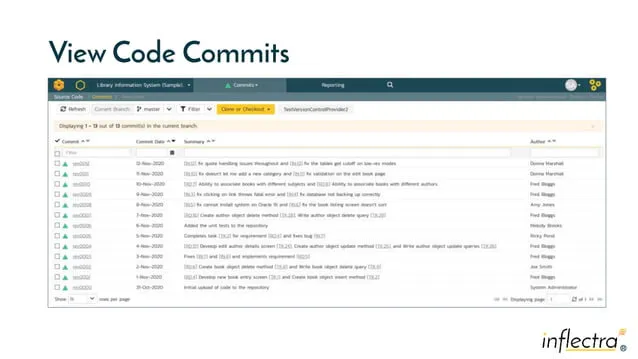
TaraVault was designed for enterprises using Inflectra’s Spira suite that needed a tightly integrated source code management solution. Its philosophy centered on bridging code management with ALM, enabling teams to track code changes alongside requirements, tests, and defects in a single platform.
This made it ideal for:
Spira Users: Organizations already using SpiraTest, SpiraTeam, or SpiraPlan, particularly in industries like software development, finance, or healthcare, where traceability is critical.
Teams Needing Git or Subversion: TaraVault supported both Git’s distributed version control and Subversion’s centralized model, catering to diverse workflows.
Compliance-Driven Organizations: Its enterprise-grade security and access controls appealed to teams in regulated sectors requiring robust governance.
With its retirement, TaraVault’s users are encouraged to migrate to external SCM platforms like GitHub or GitLab, which integrate with the Sp ira suite.
GitHub vs. TaraVault: A Quick Comparison
The differences between GitHub and TaraVault highlight their distinct purposes.
| Aspect | GitHub | TaraVault |
|---|---|---|
| Primary Focus | Community, Open Source, Developer Experience | Enterprise Source Code Management with Spira Integration |
| Hosting Options | Cloud (SaaS), Self-hosted (Enterprise) | Cloud-only (SaaS) |
| CI/CD | GitHub Actions (powerful, integrated, and extensible) | Relied on third-party integrations (e.g., Jenkins). No built-in CI/CD solution. |
| Unique Value | Massive developer community and marketplace | Native integration with SpiraTest, SpiraTeam, and SpiraPlan. |
| Scalability | Scales for open-source and enterprise | Optimized for enterprise teams using Spira with moderate-scale repositories |
Pros and Cons
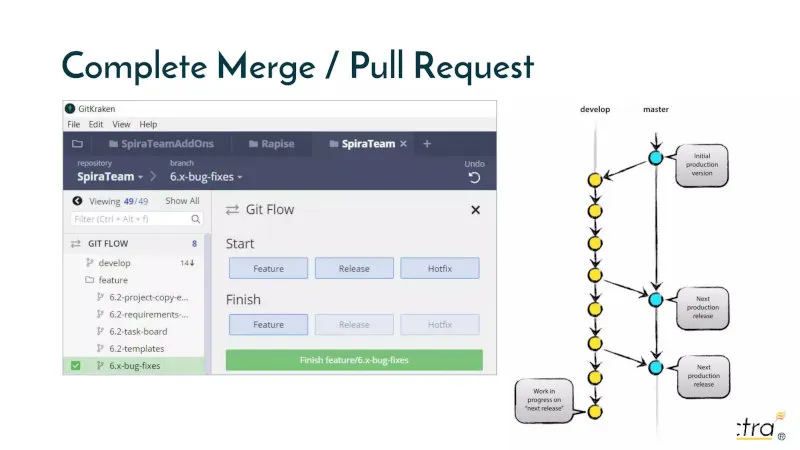
Why You Might Have Chosen TaraVault
Seamless Spira Integration: Its tight coupling with Spira enabled traceability from code to requirements, tasks, and defects.
Git and Subversion Support: Offered flexibility for teams using either version control system.
Enterprise-Grade Security: Provided robust access controls and compliance features for regulated industries.
Free Tier for Spira Users: Made it accessible for small teams or Spira customers to try integrated SCM.
Simplified Code Review: Inline diffs and pull request management within Spira streamlined collaboration.
Potential Drawbacks
Niche Focus: Its value was tied to Spira usage; without Spira, platforms like GitHub or GitLab offered more features.
No Built-in CI/CD: Required external tools for CI/CD, unlike GitHub Actions or GitLab CI.
Smaller Ecosystem: Lacked the community and third-party app ecosystem of GitHub.
Cloud-Only: No self-hosted option, limiting appeal for some enterprises.
Retirement by April 2025: Its discontinuation requires users to migrate to other SCM platforms.
Technical Architecture and Scalability
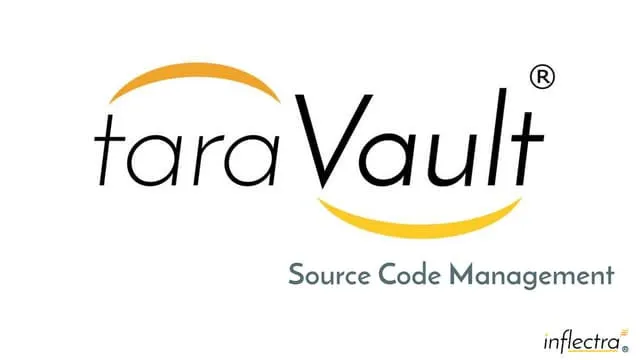
TaraVault was a cloud-based SaaS platform built for enterprise-scale source code management. Key technical aspects included:
Cloud Infrastructure: Hosted on secure servers with robust availability and data integrity.
Git and Subversion Support: Managed both distributed (Git) and centralized (Subversion) repositories, with seamless integration into Spira’s ALM workflows.
Scalability: Handled moderate-scale repositories efficiently, suitable for enterprise projects with complex codebases.
Access Controls: Role-based access control (RBAC) ensured secure management of repositories.
Its architecture was optimized for integration with Spira, making it less suited for standalone SCM compared to broader platforms like GitHub.
Use Cases and Industry Applications
TaraVault was tailored for industries requiring integrated ALM and SCM:
Software Development: Teams used TaraVault to manage code alongside Spira’s requirements and test cases, ensuring traceability.
Finance and Healthcare: Its security features supported compliance-driven organizations managing sensitive codebases.
Agile Teams: TaraVault’s integration with SpiraTeam’s agile boards suited teams using Scrum or Kanban.
Hybrid Workflows: Supported teams using both Git and Subversion within the same project.
With its retirement, these use cases are now addressed by Spira’s integrations with external SCM tools like GitHub and GitLab.
Integration with Other Tools
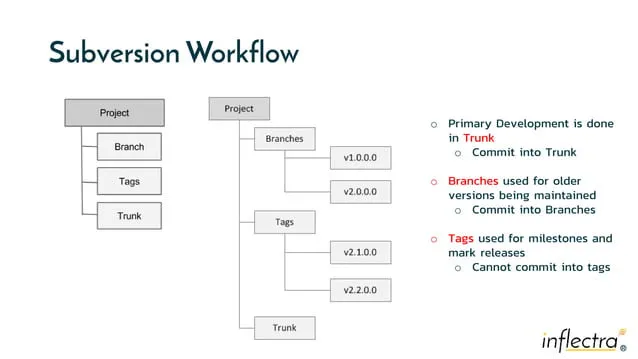
TaraVault’s integrations focused on the Spira suite but extended to third-party tools:
Spira Suite: Native integration with SpiraTest, SpiraTeam, and SpiraPlan for linking code to ALM artifacts.
CI/CD Tools: Supported Jenkins, TeamCity, and others via standard Git/Subversion protocols.
Issue Tracking: Compatible with Jira and other trackers, though less seamless than Spira integration.
IDEs: Worked with standard Git/Subversion clients like Visual Studio Code or TortoiseSVN.
Post-retirement, Spira’s integrations with GitHub, GitLab, and other tools replace TaraVault’s functionality.
Spira Suite: A Complementary ALM Platform
The Spira suite—comprising SpiraTest, SpiraTeam, and SpiraPlan—is Inflectra’s flagship ALM platform, distinct from TaraVault’s source code management focus. Unlike TaraVault, which was a niche SCM solution, the Spira suite provides comprehensive tools for managing the entire software development lifecycle, from requirements to testing to project management. Below is an overview of each product and how they contrast with TaraVault:
SpiraTest:
-
Purpose: A test management solution for tracking requirements, test cases, and defects.
-
Key Features: Supports manual and automated testing, integrates with tools like Rapise and Tricentis Tosca, and provides traceability and reporting dashboards.
-
Use Case: Ideal for QA teams needing robust test management without broader ALM features.
-
Difference from TaraVault: Focuses on testing rather than code hosting, complementing TaraVault by linking test cases to code revisions.
SpiraTeam:
-
Purpose: A complete ALM solution combining test management, agile project management, and issue tracking.
-
Key Features: Supports agile methodologies (Scrum, Kanban, etc.), integrates with SCM tools (e.g., GitHub, GitLab), and offers dashboards for project velocity and risk tracking.
-
Use Case: Suited for development teams needing integrated testing and project management.
-
Difference from TaraVault: Provides broader ALM capabilities, replacing TaraVault’s SCM role with integrations to external repositories like GitHub.
*SpiraPlan:
-
Purpose: An enterprise-grade ALM platform extending SpiraTeam with program and portfolio management.
-
Key Features: Manages multiple projects, supports hybrid agile-waterfall methodologies, and offers advanced reporting and risk management.
-
Use Case: Designed for large organizations managing complex project portfolios.
-
Difference from TaraVault: Focuses on enterprise-wide ALM, integrating with external SCM tools to replace TaraVault’s functionality.
Key Differences from TaraVault:
-
Scope: TaraVault was a source code management tool, while the Spira suite is a full ALM platform covering requirements, testing, and project/portfolio management.
-
Integration: TaraVault was built to work within the Spira ecosystem, whereas SpiraTest, SpiraTeam, and SpiraPlan integrate with external SCM platforms (e.g., GitHub, GitLab) post-TaraVault retirement.
-
Use Case: TaraVault managed code repositories, while the Spira suite manages the broader development lifecycle, making it complementary to SCM tools rather than a replacement.
-
Current Status: TaraVault was retired by April 2025, while the Spira suite remains actively developed with integrations to modern SCM platforms.
Complementary Role: The Spira suite enhances SCM platforms like GitHub by linking code changes to requirements, tests, and tasks. For example, SpiraTeam can synchronize GitHub Issues with defects or trigger automation events via GitHub Actions, providing traceability and ALM capabilities that SCM platforms lack.
Migration Post-Retirement: With TaraVault’s retirement, Spira users are encouraged to migrate repositories to GitHub, GitLab, or other SCM platforms. Inflectra provides integration plugins to ensure seamless connectivity, maintaining traceability and workflow continuity.
For more details on Spira pricing or integrations, visit https://www.inflectra.com.
Getting Started with TaraVault
To begin using TaraVault (before its retirement):
-
Sign Up: Visit https://www.inflectra.com to create an account. The free tier for Spira users supported 1 committer and unlimited viewers.
-
Set Up Repositories: Create Git or Subversion repositories and link them to Spira projects.
-
Configure Teams: Use role-based access controls to manage permissions.
-
Integrate with Spira: Link repositories to Spira artifacts for traceability.
-
Migrate Before Retirement: By April 2025, transition repositories to GitHub, GitLab, or other SCM platforms using Inflectra’s migration guidance.
Additional resources:
Documentation: https://www.inflectra.com/Support/
Community: https://www.inflectra.com/Community/
Frequently Asked Questions (FAQ)
Q: What happens after TaraVault’s retirement in April 2025?
A: Inflectra has announced that TaraVault is retired by April 2025. Users must migrate their repositories to platforms like GitHub or GitLab. Inflectra provides migration guidance and Spira integrations to maintain functionality.
Q: Can TaraVault be used without Spira?
A: Yes, but its primary value was its integration with SpiraTest, SpiraTeam, and SpiraPlan. Without Spira, platforms like GitHub or GitLab offer more robust SCM features.
Q: Does TaraVault support CI/CD pipelines?
A: TaraVault lacked built-in CI/CD, relying on third-party tools like Jenkins. SpiraTeam and SpiraPlan now integrate with CI/CD tools via external SCM platforms.
Q: Is TaraVault suitable for open-source projects?
A: TaraVault was designed for enterprise use, lacking the community features of GitHub. It was better suited for private repositories integrated with Spira.
Q: How does Spira integrate with other SCM platforms post-TaraVault?
A: SpiraTest, SpiraTeam, and SpiraPlan integrate with GitHub, GitLab, and others, linking code changes to ALM artifacts and supporting workflows like defect synchronization.
Q: Is there a self-hosted option for TaraVault?
A: No, TaraVault was cloud-only. SpiraTest, SpiraTeam, and SpiraPlan offer both cloud and self-hosted options.
Conclusion
TaraVault was a specialized source code management tool tailored for enterprises using Inflectra’s Spira suite, offering Git and Subversion hosting with seamless ALM integration. However, its niche focus and retirement in April 2025 limit its long-term viability. The Spira suite—SpiraTest, SpiraTeam, and SpiraPlan—continues to thrive as a comprehensive ALM platform, complementing SCM tools like GitHub and GitLab with robust requirements, testing, and project management capabilities. For organizations seeking a GitHub alternative, TaraVault’s discontinuation shifts focus to Spira’s integrations with modern SCM platforms, ensuring traceability and workflow continuity in a broader ALM context.